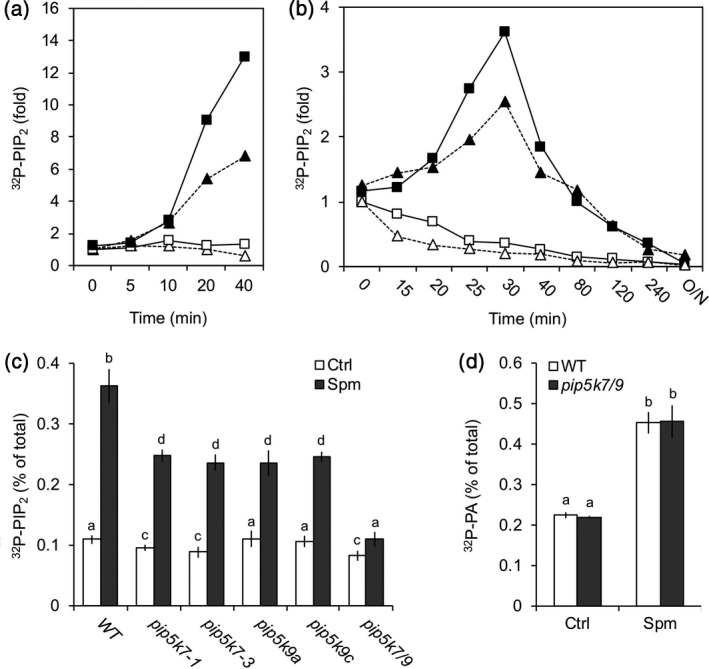Figure 2.

Spm‐induced PIP2 is triggered by activation of PIP5K, not through inhibition of PLC or PIP2 phosphatase.
(a) Seedlings were pulse‐labelled with 32Pi for 15 min and then treated with Spm or buffer alone (Ctrl) for the times indicated. The PIP2 fold increase of two independent experiments is shown (squares and triangles). (b) Pulse‐chase experiment where seedlings were treated with buffer ± Spm for 15 or 30 min (triangles and squares, respectively), labelled with 32Pi for 5 min and then chased (t = 0) with non‐radioactive Pi in the presence or absence of Spm for the times indicated. Values in (a) and (b) were normalised to 32P‐PI and expressed with respect to Ctrl, 0 min. Open symbols, Ctrl; closed symbols, Spm. (c) 32P‐PIP2 response to Spm of WT and pip5k7, pip5k9 and pip5k7 pip5k9 (pip5k7/9) double mutants. Seedlings were 32Pi‐labelled overnight and treated for 30 min with 60 μm Spm. (d) 32P‐PA response in WT and pip5k7/9 mutant plans. Data show that the PA response is independent of PIP2. In all cases, data are presented as the mean ± SD (n = 3).
